
石油勘探与开发(英文)(Petroleum Exploration and Development) 知网维普万方目次
- 高T2
- 高T3
- 主管单位:
中国石油天然气集团有限公司
- 主办单位:
中国石油集团科学技术研究院有限公司
- 国际刊号:
2096-4803;EISSN1876-3804
- 国内刊号:
10-1529/TE
- 学科分类:
- 字数:
16000-40000
- 有无基金:
/有基金 100.0%
- 周期:
CN外文
- 特殊属性:
外文期刊
- 电话:
010-83598173;83597424(202305期)
- 邮箱:
skykeg@petrochina.com.cn(202305期)
- 复合因子:
0.708
- 综合因子:
0.508
- 收录:
知网,维普,万方目次
- 级别:
高T2,高T3
期刊简介
《石油勘探与开发》期刊已被查看: 次
更新频次
高频栏目:
2023年05期文章-100%-期平均发文量20篇
单位占比
其他-100.0%一作占比
/有基金-100.0%投稿指南
1、投稿方式:在线投稿。
2、刊内网址:(202305期)
https://www.sciencedirect.com/journal/petroleum-exploration-and-development
3、官网网址:http://www.cpedm.com/
https://www.keaipublishing.com/en/journals/petroleum-exploration-and-development/
4、投稿系统:
http://www.cpedm.com/journalx_syktkf_en/authorLogOn.action
5、出刊日期:双月刊,逢双月出版。
2024年2月26日星期一
《石油勘探与开发(英文)》投稿须知
【官网信息】
Guide for Authors
Petroleum Exploration and Development is a bimonthly journal sponsored by the Research Institute of Petroleum Exploration and Development (RIPED), PetroChina. In 2008, Elsevier started publishing the Journal on ScienceDirect, the online full text and bibliographic information resource. The purposes of Petroleum Exploration and Development are to advance the theory and technology of the exploration and production of petroleum resources as well as of petroleum engineering; to disseminate and communicate the up-to-date science and technology of petroleum; and to cover the latest theoretical and technological developments and research results in China and the world relating to petroleum geology, oil and gas field development, and petroleum engineering. The columns in the journal include: Petroleum Exploration, Oil and Gas Field Development, Petroleum Engineering, Comprehensive Research, Academic Discussion, etc.
Petroleum Exploration and Development is covered by both SCI and EI and published worldwide in both Chinese and English. In the 2017 Journal Citation Reports (JCR), the Impact Factor of Petroleum Exploration and Development is 2.065, which is ranked first (Q1) among all the SCI journals in the category of Petroleum Engineering.
Submission information
All manuscripts should be submitted to Petroleum Exploration and Development through "Online Submission" on the journal's website (http://www.cpedm.com/journalx_syktkf_en/authorLogOn.action). If you meet any problems concerning the submission, please contact us by e-mail to skykeg@petrochina.com.cn
Submission of an article implies that the work described has not been published previously (except in the form of an abstract or as part of a published lecture or academic thesis), that it is not under consideration for publication elsewhere, that its publication is approved by all Authors and tacitly or explicitly by the responsible authorities where the work was carried out, and that, if accepted, it will not be published elsewhere in the same form, in English or in any other language, without the written consent of the copyright-holder.
Preparation of manuscripts
Contributions must be presented in correct English and be clearly written. Contributors from China are requested to submit a corresponding Chinese version.
Title
Concise and informative. Avoid abbreviations and formulae where possible.
Author names and affiliations
Provide the full postal address of each affiliation, including the country name.
First author and corresponding author
Provide a brief introduction about the first author. Clearly indicate who is willing to handle correspondence at all stages of refereeing and publication, also post-publication. Ensure that telephone and fax numbers (with country and area code) are provided in addition to the e-mail address of the corresponding author.
Abstract
A concise and factual abstract is required (maximum length 200 words). The abstract should state briefly the purpose of the research, the principal results and major conclusions.
Keywords
Immediately after the abstract, provide a maximum of 5 keywords, avoiding general and plural terms and multiple concepts (avoid, for example, 'and', 'of'). Be sparing with abbreviations: only abbreviations firmly established in the field may be eligible.
Subdivision of the article
Divide your article into clearly defined and numbered sections. Subsections should be numbered 1.1 (then 1.1.1, 1.1.2), 1.2, etc. Any subsection should be given a brief heading. Each heading should appear on its own separate line.
References
References should be numbered consecutively in the order in which they are first mentioned in the text. Responsibility for the accuracy of bibliographic citations lies entirely with the authors. Please ensure that every reference cited in the text is also present in the reference list (and vice versa). Only articles that have been published or are in press should be included in the references. Journal articles and books must be cited by the following formats:
For journals: names of all the authors (surnames followed by initials), article title, name of periodical, year, volume number, issue number (in brackets), and range of pages.
For books: names of authors (surnames followed by initials), title, In: xxx ed(s)., book name, place of publication, publisher, year and range of pages.
Quantities and units
All parameters, units and symbols to be used must conform to the national standard and relevant professional standard. Each physical quantity in a formula must be given its appropriate scientific designation and using recognized standard units.
Figures and tables
The size of a figure or table should not be larger than a full page, and neither should be a plate (either color plate or white-black plate).
Footnotes
These should be included only when absolutely essential.
Acceptance of manuscripts
The Editorial Office informs the author of the acceptance of the contribution within 90 days after its receipt. During this period, please do not submit the contribution involved to other publishers. When the acceptance of the manuscript for publication is decided, the author should revise his (or her) manuscript in light of the opinions or suggestions of the editor.
Use of inclusive language
Inclusive language acknowledges diversity, conveys respect to all people, is sensitive to differences, and promotes equal opportunities. Content should make no assumptions about the beliefs or commitments of any reader; contain nothing which might imply that one individual is superior to another on the grounds of age, gender, race, ethnicity, culture, sexual orientation, disability or health condition; and use inclusive language throughout. Authors should ensure that writing is free from bias, stereotypes, slang, reference to dominant culture and/or cultural assumptions. We advise to seek gender neutrality by using plural nouns ("clinicians, patients/clients") as default/wherever possible to avoid using "he, she," or "he/she." We recommend avoiding the use of descriptors that refer to personal attributes such as age, gender, race, ethnicity, culture, sexual orientation, disability or health condition unless they are relevant and valid. When coding terminology is used, we recommend to avoid offensive or exclusionary terms such as "master", "slave", "blacklist" and "whitelist". We suggest using alternatives that are more appropriate and (self-) explanatory such as "primary", "secondary", "blocklist" and "allowlist". These guidelines are meant as a point of reference to help identify appropriate language but are by no means exhaustive or definitive.
DOUBLE_ANONYMIZED_REVIEW
This journal uses double anonymized review, which means the identities of the authors are concealed from the reviewers, and vice versa. More information is available on our website. To facilitate this, please include the following separately:
Title page (with author details): This should include the title, authors' names, affiliations, acknowledgements and any Declaration of Interest statement, and a complete address for the corresponding author including an e-mail address.
Anonymized manuscript (no author details): The main body of the paper (including the references, figures, tables and any acknowledgements) should not include any identifying information, such as the authors' names or affiliations.
All manuscripts would be pre-checked by editorial office. Any submission fail to meet the basic standard of the journal would be desk rejected for reasons like out of scope, ethic issues, high similarities, etc. Then, editorial office would assign the submission to the Editor-in-Chief.
The Editor-in-Chief will assign to an Associate Editor or an Editorial Board Member. The editor would invite multiple reviewers to review this paper.
After at least 2 reviewers provide their review reports and comments, the editor would provide feedbacks based on review comments to the authors including his/her own review.
When author submits the revised manuscript, the editor would recommend a decision to the Editor-in-Chief.
The Editor-in-Chief will make a final decision based on reviewers' comments and the editor's recommendation.
For submissions from Editor-in-Chief, Associate Editors, or Editorial Board Members, other journal editors will handle them independently.
上一篇:护理前沿(英文)(Frontiers of Nursing)(原:护理研究(英文)(Chinese nursing research))(OA期刊)下一篇:中华文化与传播研究(集刊)(不收版面费审稿费)
《石油勘探与开发》同类石油|天然气工业期刊
-

石油实验地质(不收版面费审稿费)
北核,CSCD,科核,武A,高T2
CN中文-双月刊影响因子3.398
-
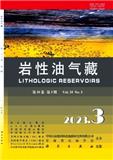
岩性油气藏
北核,CSCD,科核,武A,高T2
CN中文-双月刊影响因子2.902
-
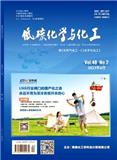
低碳化学与化工(原:天然气化工-C1化学与化工)
北核,科核,武A-,CACJ-扩展
CN中文-月刊影响因子0.876
-
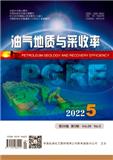
油气地质与采收率
北核,CSCD,科核,武A,高T2
CN中文-双月刊影响因子3.747
-
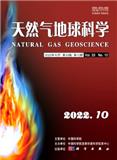
天然气地球科学
北核,CSCD,科核,武A,高T1
CN中文-月刊影响因子2.438
-
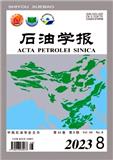
石油学报
北核,科核,武A+,高T1,高T3,EI(中国2024)
CN中文-月刊影响因子5.097
-
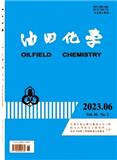
油田化学
北核,科核,CSCD扩,武A,高T2
CN中文-季刊影响因子1.113
-
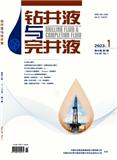
钻井液与完井液
北核,科核,武A-,高T2,CACJ-核心
CN中文-双月刊影响因子1.352
常见问题
-
石油勘探与开发杂志社官网、联系方式是什么?
石油勘探与开发杂志社官网:https://www.sciencedirect.com/journal/petroleum-exploration-and-development
投稿网址:http://www.cpedm.com/journalx_syktkf_en/authorLogOn.action联系电话:010-83598173;83597424(202305期)
投稿邮箱:skykeg@petrochina.com.cn(202305期) -
石油勘探与开发杂志是核心期刊么?
石油勘探与开发不是核心期刊,级别是:高T2,高T3, 是:石油|天然气工业分类下的知网,维普,万方目次收录的期刊。
-
请问你们是石油勘探与开发杂志社吗?
我们不是《石油勘探与开发》杂志社。本站主要从事期刊信息展示与期刊推荐,不是任何杂志官网,直投稿件请联系杂志社。本站仅提供免费的学术指导、论文辅导、期刊投稿信息整理收集服务。
-
你们指导服务后可以保证文章被发表吗?
期刊发表的成功与否,主要取决于文章内容的质量。编辑老师会根据研究领域、创新性等多因素进行考量。我们会帮助您理解期刊的发表要求,助力提升发表几率,从而增加发表的机会。
-
晋级论文能否在报纸上发表?
在学术界,论文的发表往往被视为研究者职业发展的重要一环。晋级论文,即为了获得更高职称或学术地位而撰写的学术论文,通常需在专业期刊上发表。然而,许多人可能会问
